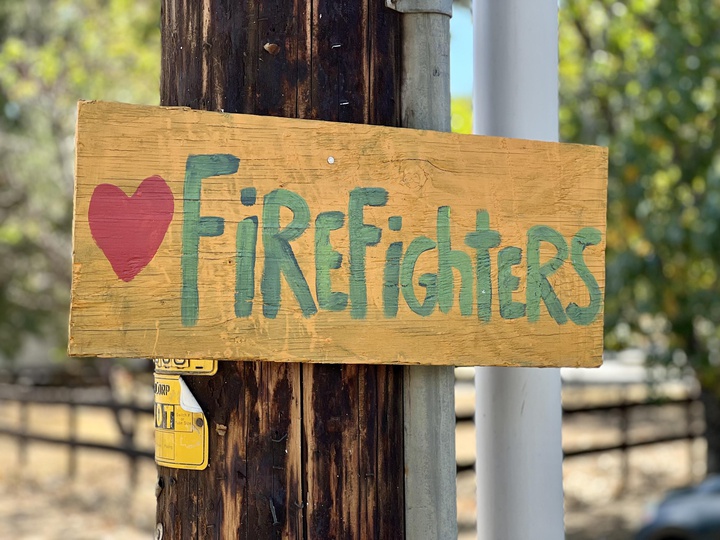Jessica Cejnar Andrews / Wednesday, Sept. 27, 2023 @ 4:23 p.m. / Fire
Forest Service Begins Burned Area Emergency Response Assessment For Smith River Complex

Courtesy of Inciweb
Recent rain has dampened the spread of the Smith River Complex, the Six Rivers National Forest announced Wednesday.
A new incident management team — Incident Management Team 12 — has taken over command on the California side of the complex. Evacuations have been lifted. And a Six Rivers Burned Area Emergency Response (BAER) team has begun its post-fire assessment of the complex.
The Six Rivers team will work with a similar team with the Rogue River-Siskiyou National Forest in assessing the burned areas in Oregon. Teams will evaluate the area to determine watersheds that have an increased potential for flooding and will help land managers prepare for seasonal thunderstorms.
Meanwhile, crews are continuing to patrol fire lines to extinguish hotspots and areas that are smoldering in order to prevent potential flair ups. They will also work to alleviate any environmental impacts firefighting operations had caused.
At this point, the U.S. Forest Service will release updates every other day going forward.
From the Six Rivers National Forest:
A Forest Service Burned Area Emergency Response (BAER) team has been established by the Six Rivers National Forest (NF) to begin a post-fire burned area emergency assessment of the wildfires within the Smith River Complex and 2023 SRF Lightning Complex. The BAER assessment team is coordinating with local tribes, and other federal, state, and county agencies, such as the Natural Resources Conservation Service (NRCS), National Weather Service (NWS), US Geological Survey (USGS), and National Marine Fisheries Service (NOAA Fisheries) to assess potential post-fire impacts to the burned watersheds. In addition, the Six Rivers BAER Team is assisting the Rogue River-Siskiyou National Forest BAER Team where the Smith River Complex burned onto their forest lands in California and Oregon. Forest Service BAER team assessments typically take approximately two weeks to complete.
These rapid assessments evaluate the burned area to identify watersheds having increased potential for post-fire flooding, sediment flows and rockslides, and assist land managers to prepare the burned area for seasonal thunder cell storms. The team focus is on potential emergency impacts to life, safety, and property on federal land.
BAER teams generally consist of scientists and specialists including hydrologists, geologists, soil scientists, road engineers, botanists, biologists, archeologists, and geographic information specialists, and the BAER team assessing these two complexes burned areas has a full complement of resource specialists. BAER teams conduct surveys to collect field data within burned areas to analyze through mapping (GIS) and computer models.
Findings are presented along with recommended emergency stabilization treatments in a BAER assessment report.
The team utilizes satellite imagery and specialist data to analyze and produce a runoff map that shows the levels of hydrological potential flows during rain events. This is the first step in assessing potential watershed impacts from wildfires to any federal values that may be at-risk from potential increased flooding, sedimentation, debris flows, and rockslides. The BAER team will produce a report that describes potential threats associated with the burned area’s post-fire conditions and often include recommended emergency stabilization measures and actions.
BAER emergency response efforts are focused on the protection of human life, safety, and property, as well as critical cultural and natural resource values such as the water quality of streams and wetlands on federal lands.
BAER reports are shared with interagency cooperators such as California Office of Emergency Services (CalOES), NRCS, and counties who work with downstream private home and landowners to prepare for potential post-fire flooding and debris flow impacts. Homes or businesses that could be impacted by flooding from federal land that resulted from wildfires may be eligible for flood insurance coverage from the National Flood Insurance Program (NFIP).Information about NFIP is available through FEMA at www.fema.gov/national-flood-insurance-program, or www.floodsmart.gov/wildfires. Other flood preparedness
CLICK TO MANAGE